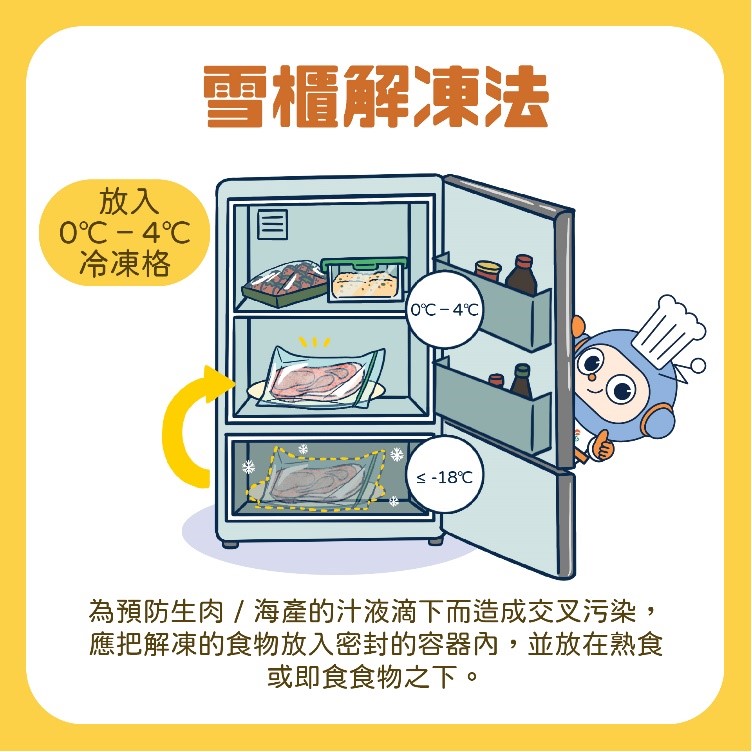
Feature Article
Review of Food Poisoning Outbreaks Related to Food Premises and Food Businesses in 2021
This article reviews the food poisoning outbreaks (FPOs) related to local food premises and food businesses reported to the Centre for Food Safety (CFS) in 2021.
FPOs Related to Local Food Premises and Food Businesses
In 2021, the CFS received 199 referrals of FPOs in which 608 persons were affected (Figure 1).
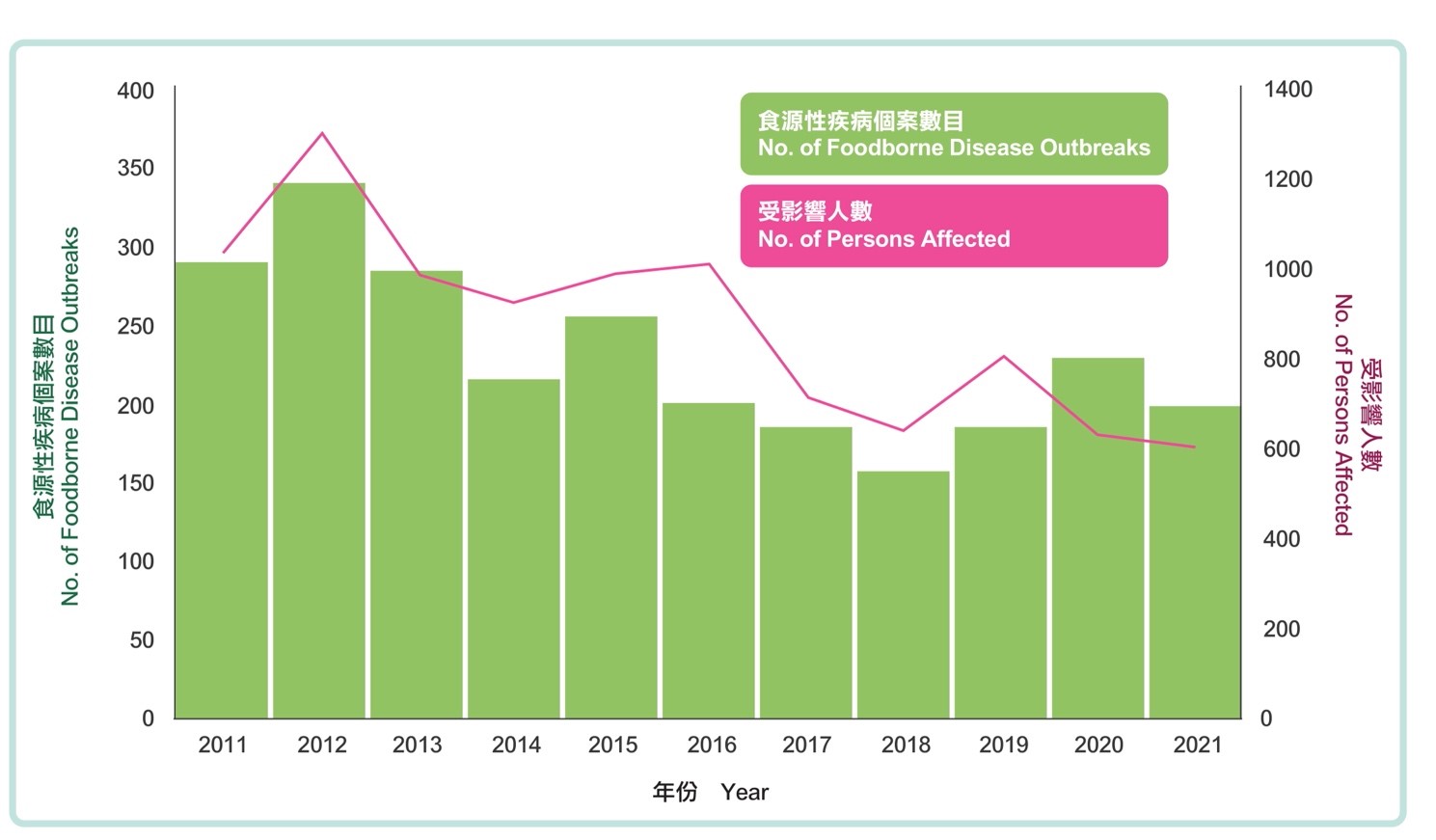
Figure 1: Number of FPOs related to local food premises and food businesses and corresponding number of persons affected from 2011 to 2021
Causative Agents and Contributing Factors
In 2021, bacterial foodborne agents continued to be the main cause (67%) of FPOs, with Vibrio parahaemolyticus (54% of all bacterial cases) overtaking Salmonella (23%) as the leading agent, followed by Staphylococcus aureus (11%), Bacillus cereus (7.6%) and Clostridium perfringens (3.8%). Viral causes accounted for 27% of the FPOs in the year, the single causative agent being norovirus. The remaining FPOs (6%) were related to biochemical causes (e.g. mushroom toxins, ciguatera toxins). “Contamination by raw food”, consumption of “raw food” and “inadequate cooking” were the three most frequently identified factors contributing to all FPOs in 2021.
Highlights on Major Epi-linked FPOs in 2021
The CFS noted that there was an increase in FPOs related to raw oysters in 2021. A total of 101 cases (326 people affected) were recorded in the year, whereas it was 24 outbreaks in annual average in the five-year period from 2016 to 2020 (Figure 2). Live oysters were the incriminated food in the FPOs linked to raw oysters in 2021. Storage temperature and wet storage were the main issues identified.
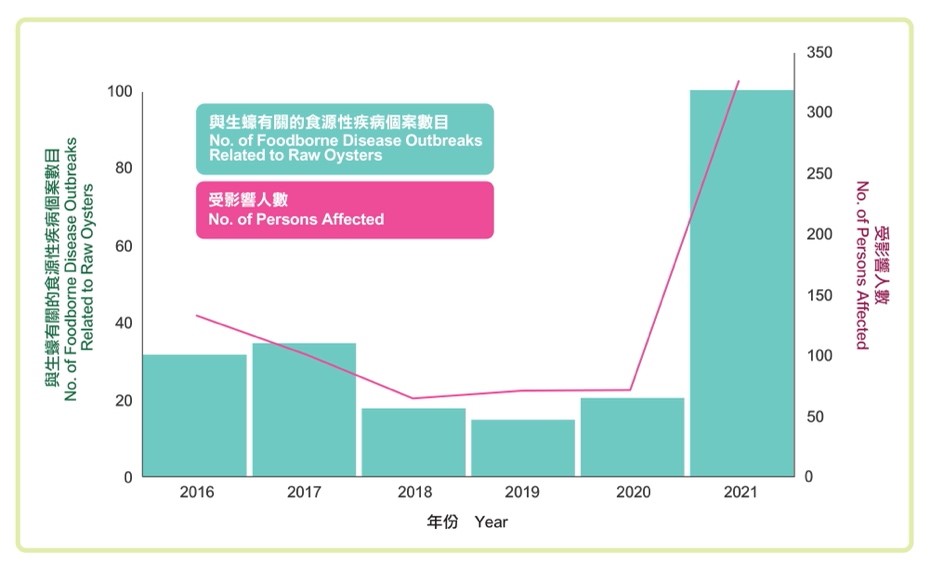
Figure 2: Number of FPOs linked to raw oysters and corresponding number of persons affected from 2016 to 2021
The largest cluster of FPOs in 2021 was recorded in October. It comprised 32 epi-linked cases related to a restaurant with 99 people affected. The FPOs were confirmed to be caused by Vibrio parahaemolyticus. Raw oysters were among the incriminated food items in these outbreaks.
Importance of Storage Temperature
Field investigation of the above FPO cluster revealed that the refrigerators for storing ready-to-eat seafood at the restaurant were defective. According to the restaurant staff, the refrigerators had been malfunctioning for two to three days before the incriminated raw oysters were served for consumption by the affected persons. Not only was the refrigerator temperature above 4°C, the refrigerators were also overfilled to the extent that the cooling ability was compromised.
Pitfalls of Wet Storage
Wet storage of live oysters, including mixing and immersing oysters of different origins in the same tank, was identified in a number of FPOs associated with raw oysters in 2021. The stool sample of a patient in these cases was tested positive for norovirus. The CFS had instructed the importers/suppliers concerned to cease this practice and discard the reimmersed raw oysters.
For wet storage, live oysters are submerged under water or subjected to heavy spraying. In its Code of Practice for Fish and Fishery Products, the Codex Alimentarius (Codex) specifies that live bivalve molluscs must not be reimmersed in or sprayed with water after they have been packaged and sent off the distribution centre. In general, food authorities of oyster-exporting countries are against wet storage of live oysters subsequent to their export. In the European Union, reimmersion of oysters after packaging is prohibited.
Oysters and Food Safety Risks
Oysters are filter feeders that will take in pathogenic microorganisms such as bacteria (including Vibrio parahaemolyticus) and viruses (norovirus, hepatitis A virus, etc.) from the surrounding seawater. These pathogens can grow rapidly at above 4°C. To contain the growth of these harmful microorganisms, it is important to maintain proper storage of raw oysters. Besides, we should beware of the food poisoning risks of consuming oysters without thorough cooking. Susceptible individuals such as the elderly, young children, pregnant women and immunocompromised patients are particularly affected.
Conclusion
In general, there was a downward trend in the number of FPOs associated with food premises and food businesses and the number of persons affected in the period 2012-2018. The figures remained somewhat static in the past three years. However, the numbers increased in 2021 due to lapses in food safety practices in relation to raw oysters. This illustrates that a lot of consumers can be affected by a small number of food traders negligent in hygiene practices.
To reduce risks, raw oysters should only be consumed in or obtained from reliable licensed premises. Oysters intended for consumption after cooking should not be eaten raw. The trade is also reminded to place emphasis on hygiene practices and stop wet storage of raw oysters.
Mascot ON in Lesson
How to Prevent Food-related Choking in Infants and Young Children?
Infants and young children have small air and food passages, and their food-biting or chewing skills are still under development. They are more prone to food choking than adults. Asphyxia may occur if food gets stuck in their throats.
To minimise the risk of food-related choking in infants and young children, caregivers can modify the food texture, such as softening the food by cooking, finely chopping it or peeling its skin. They should also avoid giving foods that are hard to bite or chew to infants and young children. Extra attention should be paid to the following foods that can easily cause choking:
- small hard foods (e.g. nuts);
- small round/oval foods (e.g. grapes, beans);
- foods with skins/leaves (e.g. sausages, lettuce, nectarines);
- compressible foods (e.g. marshmallows, chewing gum);
- thick pastes (e.g. chocolate spreads, peanut butter);
- fibrous foods (e.g. celery); and
- chewy foods (e.g. konjac jellies, glutinous rice balls, rice dumplings).

Process Contaminants in Food – Should I be Concerned?
We cook food for safety and a better taste. However, undesirable chemical by-products, known as process contaminants, can be formed unintentionally during home cooking or food manufacturing. Acrylamide, glycidyl esters (GE) and 3-monochloropropane-1,2-diol esters (3-MCPDE) are three process contaminants recently discussed in a report. While these substances may have potential health effects, there are ways for members of the public and the trade to reduce their content in food.
Acrylamide
Acrylamide is mainly formed in starchy foods (e.g. potatoes and bread) cooked under high temperatures as a result of the Maillard reaction, a chemical reaction between free amino acid asparagine and reducing sugars (e.g. glucose and fructose) naturally occurring in food during cooking or food processing at 120°C or above. In general, more acrylamide will be formed as the temperature and the time of cooking increase. Many baked and fried foods like biscuits, potato chips, French fries and toast contain relatively high levels of acrylamide, whereas food preparation by boiling and steaming does not typically produce acrylamide.
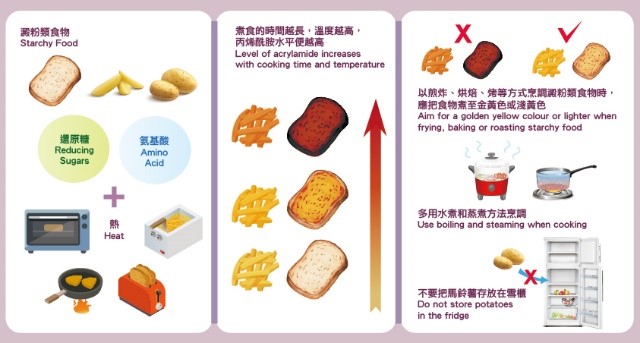
Figure: Left: Formation of acrylamide Middle: The acrylamide level rises as the cooking time and the temperature increase. Right: Ways to reduce acrylamide formation
After ingestion, acrylamide is absorbed and distributed to all organs in the human body for metabolism. Animal experiments reveal that acrylamide may cause reproductive and developmental problems and increase the risk of developing cancers. Hence, dietary intakes of acrylamide should be kept as low as possible.
To reduce acrylamide in food, it is generally not advisable to cook food at high temperatures for too long. When frying, baking, toasting or roasting starchy foods like potatoes and bread at home, consumers should aim for a golden yellow or light yellow colour. Potatoes intended for frying, baking and similar uses should not be stored in the refrigerator, lest more reducing sugars will be formed and acrylamide is more likely to appear during subsequent cooking. Blanching vegetables before stir-frying or boiling or steaming them can also reduce the formation of acrylamide. As starchy foods are an important part of our daily diet, it is impractical to completely avoid acrylamide in food. Consumers should maintain a healthy and balanced diet and eat plenty of fruits and vegetables.
The trade should continue to seek ways to reduce acrylamide in food. By making reference to the “Trade Guidelines on Reducing Acrylamide in Food” issued by the CFS and the “Code of Practice for the Reduction of Acrylamide in Foods” published by the Codex, the trade can minimise acrylamide formation through selection of raw materials, formulation of recipes and food processing.
GE and 3-MCPDE
GE and 3-MCPDE are process contaminants formed when oils are heated at about 160°C or higher temperatures for removal of undesirable tastes and odours during industrial refining. They are found in edible oils (e.g. vegetable oils) and foods containing these oils (e.g. biscuits, French fries and margarine). Palm oil and its related food products are reported to contain higher levels of these contaminants.
The potential health concern about GE and 3-MCPDE is the release of glycidol and 3-monochloropropane-1,2-diol (3-MCPD) upon digestion. Research animal studies show that glycidol is gene-damaging, whereas 3-MCPD may affect the kidney and the male reproductive system of rats. Therefore, we should minimise the intake of these two contaminants from food consumption.
The trade should take measures such as selecting raw materials with lower levels of GE and 3-MCPDE and reducing edible oils in food production to lower GE and 3-MCPDE in food. Specifically, food traders should make reference to the Codex’s “Code of Practices for the Reduction of 3-MCPDEs and GEs in Refined Oils and Food Products Made with Refined Oils” to adopt techniques that suit their processing processes and products.
Key Points to Note
- Acrylamide, GE and 3-MCPDE are process contaminants formed unintentionally in some foods cooked at high temperatures.
- Both consumers and the trade should make efforts to minimise process contaminants in food.
Advice to the Public
- Do not cook food at high temperatures for too long. Food cooking by boiling or steaming can reduce acrylamide formation.
- When handling prepackaged foods, follow the manufacturer’s cooking instructions to avoid overcooking.
- Consume less refined fats and oils and related products (e.g. margarine) to reduce dietary intakes of GE and 3-MCPDE.
- Maintain a balanced and varied diet to minimise the risk of exposure to contaminants from a limited range of food items.
Food Labelling to Help Consumers Make Informed Choices
In 2021, the CFS found that some samples of prepackaged foods containing sulphur dioxide were not labelled with the food additive, which was in breach of the local food labelling requirements. Food labelling is not only a legal requirement for food traders. It also enables consumers to make informed decisions in food purchases and store and consume the foods in a safe manner.
What Is Food Labelling?
Food labelling is an important communication channel whereby consumers can find out what a food product is and learn about its ingredients and the ways to handle, prepare and consume the food safely. As the public is switching from direct food purchases from manufacturers to purchases of prepackaged foods from all corners of the world, it is important to provide trustworthy and precise food descriptions to consumers.
The Food and Agriculture Organization of the United Nations defines food labels as the information presented on food products, which includes any tag, brand, mark or pictorial or other descriptive matter written, printed, stencilled, marked, embossed or impressed on, or attached to, a container of food or food product. Such information, including ingredients, quantity and nutritional value, can accompany the food or be displayed near it for sales promotion.
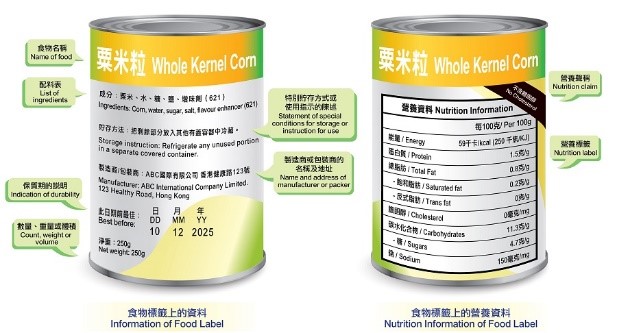
Figure: Different parts of a food label for prepackaged foods in Hong Kong
Why Is Food Labelling Useful?
Food labelling is useful in many ways. First of all, it can discourage food sellers from making false representations on a package, as they are legally required to ensure accuracy of the information presented. Moreover, the labelling of expiration and “best before” dates is an attempt to reduce food waste. In view of the increasing health burden of diet-related non-communicable diseases (NCDs) like diabetes and heart diseases worldwide, nutrition labelling can also assist consumers in making healthy food choices.
International Food Labelling Standards
The Codex is an international food standards authority. The Codex General Standard for the Labelling of Prepackaged Foods is established as a worldwide reference. It requires that a food label should not be false, misleading or deceptive or be likely to create an erroneous impression regarding the products. These general requirements have been adopted by many countries in the world.
Food Labelling in Hong Kong
In Hong Kong, the regulations related to food labelling are stipulated under the Food and Drugs (Composition and Labelling) Regulations (Cap. 132W). According to the food labelling requirements, the listed information includes the food name, the list of ingredients (including allergens), the indication of durability, special conditions for storage or instructions for use, count, weight or volume, the name and the address of the manufacturer or the packer, and the nutrition label. Traders who prepare retail packages of food from bulk packages should obtain the ingredient details from suppliers so as to provide accurate labels.
Key Points to Note
- Food labelling is an internationally accepted means of communication to convey information about prepackaged foods to consumers.
- The trade should comply with the local food labelling requirements.
- Consumers can use food labels to keep food safe, reduce food waste and make informed food choices for better health management and prevention of NCDs.
Advice to the Public
- People with food allergies can make reference to the labelling on ingredients and allergens.
Dining Out
Food Poisoning from Vibrio Parahaemolyticus and Norovirus Contamination
According to the Centre for Health Protection, norovirus or Vibrio parahaemolyticus was the suspected causative agent of several food poisoning cases reported in November and December 2021. The patients developed symptoms including abdominal pain, fever, nausea, vomiting and diarrhoea after consuming contaminated sashimi or raw oysters.
Vibrio parahaemolyticus, a bacterium mainly inhabiting salt water, is commonly found in estuaries and coastal waters where fish and shellfish live. It can cause food poisoning symptoms like abdominal pain, diarrhoea and vomiting. The patients will sometimes experience a mild fever, but the state of the illness is usually mild to moderate. As for norovirus, it can be contracted by ingestion of contaminated food and water, person-to-person transmission, contact with contaminated objects and inhalation of aerosolised vomitus. Globally, shellfish (especially raw oysters), raw vegetables, salad and ice are common foods causing norovirus infection in humans. In Hong Kong, raw oysters are the most commonly incriminated food in food poisoning outbreaks caused by norovirus.
To prevent foodborne diseases, the public is reminded to maintain personal, food and environmental hygiene at all times. When dining out, we should:
- only patronise reliable and licensed restaurants;
- avoid eating raw seafood;
- be careful in choosing cold dishes, including sashimi, sushi and raw oysters served on the buffet table;
- ensure that the food in a hot pot or a barbecue meal is thoroughly cooked before consumption;
- handle raw and cooked foods carefully and separate them completely during the cooking process;
- use two sets of chopsticks and utensils to handle raw and cooked foods separately;
- avoid patronising illegal food hawkers;
- drink boiled water;
- avoid using salt, vinegar, wine and wasabi to kill bacteria as they are not effective to serve the purpose; and
- always wash hands before eating and after using the toilet.
Healthy Eating Basics and Smart Food Choices
Healthy Eating Basics
Beware of Toxic Plants Resembling Radix Fici Simplicissimae
Many people like to have soup for a meal. Some families even make soup every day. Various ingredients can be used for making soup. Radix Fici Simplicissimae (RFS) is a popular ingredient for soup preparation in recent years.
RFS is the root of a plant belonging to the Moraceae family. Although RFS is not toxic, its plant grows in wild areas where some poisonous plants like Gelsemium elegans (a toxic plant of the Loganiaceae family) are prevalent. As RFS and the roots of these toxic plants are quite alike, they may be mixed up during harvesting. In Hong Kong, there were poisoning cases involving the consumption of RFS suspected to be contaminated with toxic plants.
Advice to the Public
-
Avoid picking wild plants for food.
-
Source food from reliable retailers.
-
Do not consume plants not known to be edible. Do not eat them if you are in doubt.
-
Seek advice from healthcare professionals immediately if you feel unwell after consuming plants.
Smart Food Choices
An Appetitising Dish — Grilled Ribs with Pineapples and Mandarin Orange Peels
If we would like to prepare food with less salt and sugar, we may use natural spices, vegetables or fruits as ingredients. The dish introduced in this issue is prepared with pineapples and mandarin orange peels. As noted by Ms Sally POON, a member of the Hong Kong Nutrition Association and a registered dietitian (UK), pineapples are naturally sweet and can be added to food to reduce the amount of sugar or honey used in cooking. To lower dietary intake of saturated fat, we should choose lean ribs with all fat parts removed before cooking. We may also grill the ribs to reduce the use of cooking oil. Interested readers can browse the “EatSmart Restaurant Star+” website of the Department of Health (https://restaurant.eatsmart.gov.hk/eng/content.aspx?content_id=986) and give the recipe a try.
News on CFS
1. CFS Took Part in Hong Kong Brands and Products Expo 2021
The CFS joined the Hong Kong Brands and Products Expo 2021 held at Victoria Park for two consecutive days on 29th and 30th December 2021. The booth set up by the CFS was crowded by visitors, which added to the festive atmosphere of the event. The CFS staff distributed publicity leaflets, pamphlets and souvenirs to the visitors to promote food safety on the spot. There were also interactive prize quizzes on the stage to explore food safety topics with the participants in a lively and interesting manner.
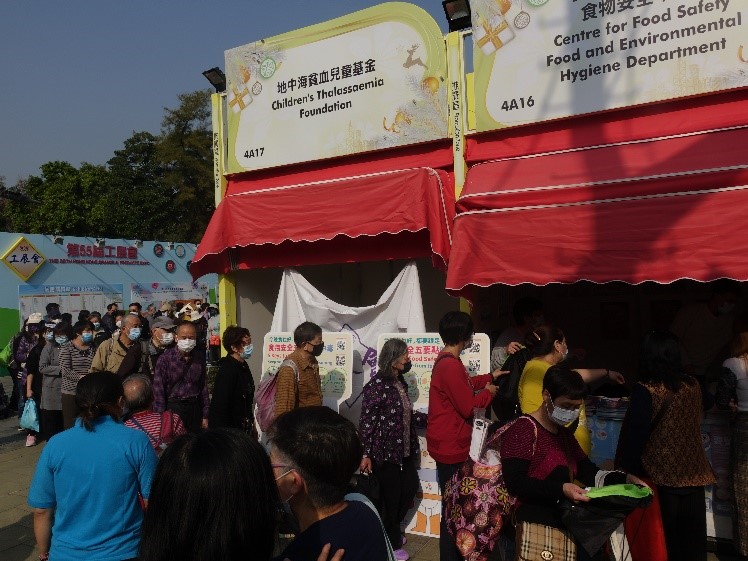
2. Distribution of 2022 Calendars and New Year Scrolls
The CFS has recently distributed a batch of 2022 calendars printed with food safety messages and some Chinese New Year scrolls to members of the Consumer Liaison Group (CLG) as free gifts in appreciation of their continued support.
You are welcome to join the CLG and receive these souvenirs. The application form can be downloaded from the CFS website.
3. Food Safety Talks 2022
The CFS will organise food safety talks and the Workshop on Good Hygiene Practices (GHPs) from April to November 2022 to promulgate proper food processing procedures among food handlers. The purpose is to enhance food safety by promoting GHPs and the implementation of the Food Safety Plan in food processing through active participation of the food trade and full cooperation between the trade and the Government. A series of talks on the Hazard Analysis and Critical Control Point System, antimicrobial resistance, the Five Keys to Food Safety and nutritional labelling will be held to enhance understanding of food safety and healthy eating among the public.
The talks will be conducted in Cantonese and the participants will receive a certificate of attendance. Please refer to the CFS website for details.
Ask Our Mascots
Cooked or Undercooked?
#Steak: I want to be a good steak.
#Mascot ON: Fine. Find a food thermometer and see if it would rate you as “well-done”.
Is the above scene familiar to you? How can we tell if a piece of meat is fully cooked? Yes, we can use a food thermometer to check if the core temperature of the meat is over 75°C. This is the way to obtain an accurate reading.
There are different types of food thermometers (https://bit.ly/3ETGNrf). In using a food thermometer to check the internal temperature of a food item, bear in mind the following:
✅ Place the tip of the probe into the centre of the food (or the thickest part of a piece of meat);
✅ Do not let the thermometer touch any bony parts of the food or any side of the food container;
✅ Clean the thermometer thoroughly each time after use.
If you know the correct ways to use a food thermometer, you should not be worried about mixing up raw or undercooked food with cooked food.
Food Safety Quiz
1. To prevent foodborne diseases, we should:
A. consume raw seafood.
B. ensure that the food in a hot pot or a barbecue meal is thoroughly cooked before consumption.
C. use the same set of chopsticks and utensils to handle raw and cooked food.
2. In using a food thermometer to check the internal temperature of a food item, we should bear in mind the following:
A. Let the thermometer touch the bony parts of the food.
B. Insert the probe into the centre of the food (or the thickest part of a piece of meat).
C. Place the thermometer on the meat surface.
3. Which of the following is the correct way to thaw frozen foods?
A. Leave the food to be thawed on the kitchen worktop for thawing at room temperature in advance (e.g. one day ahead).
B. Immerse the food to be thawed in still water.
C. Place the food to be thawed in the fridge (0℃ to 4℃) in advance (e.g. one day ahead).
Answers:
1. B 2. B 3. C
Diary of Mascot ON
Captain GUS Teaches You How to Defrost Food Safely

ON: People tend to cook more at home during the COVID-19 pandemic. Do you know the importance of complete thawing of food and the correct defrosting methods? For this question, I have invited Captain GUS, who is experienced in thawing food, to explain the proper defrosting methods to ease your worries.
Captain GUS: Food cannot be thoroughly cooked unless it is fully thawed. If food is thawed at room temperature, the bacteria present in the food before freezing may grow again. To ensure food safety, two defrosting methods are recommended.
1.  Rapid Defrosting
Rapid Defrosting
For fast defrosting of frozen meat, place the meat under cold running water or put it in the microwave oven and select the “defrost” setting.
 ATTENTION
ATTENTION
Food cannot be refrozen after rapid defrosting. The defrosted food should be cooked and consumed immediately.
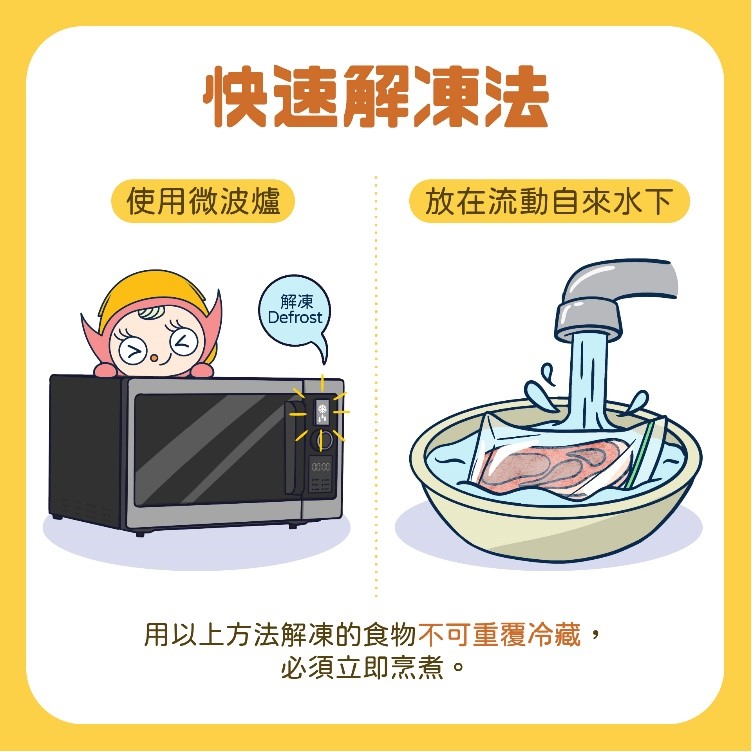
2.  Defrosting in the Fridge
Defrosting in the Fridge
Place the food to be thawed in the fridge (0℃ to 4℃) in advance (e.g. one day ahead).
 ATTENTION
ATTENTION
To prevent cross-contamination due to dripping of juices from raw meat or seafood onto other foods, store the food to be thawed in a sealed container and place it under cooked or ready-to-eat foods.
